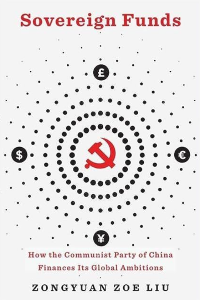
Receive free Books updates
We’ll send you a myFT Daily Digest email rounding up the latest Books news every morning.
If possessing more than a trillion US dollars is a problem, then it is one that most countries would be happy to suffer. But for China in the 2000s, the country’s huge stash of foreign exchange reserves was an issue that sparked impassioned debate.
It wasn’t the absolute amount that was incendiary. The dollars built up by inflows of investment and China’s trade surpluses were seen as the accoutrements of a rising superpower. The problem was how the money was invested.
The only pool of capital in the world large and safe enough to absorb China’s reserves was the US Treasury bond market. But from mid-2005, a sharp depreciation of the US dollar against the renminbi, coupled with weak US interest rates, meant that China was earning next to nothing from investing its prize asset.
The hurried response to this politically sensitive underperformance was to establish in 2007 the China Investment Corporation, which now ranks as the world’s largest sovereign wealth fund with $1.35tn in assets under management at the end of 2021, outstripping both Norway’s sovereign wealth fund and that of Abu Dhabi, according to Statista, a data company.
So poorly planned was CIC’s establishment that the fund’s initial iteration bore more resemblance to a Communist party committee than a team of crack investors dedicated to shareholder value. None of the founding board members had previously worked as professional fund managers. They were instead drawn from the powerful bureaucracies that competed hard to shape China’s financial policies. All were members of the Communist party engaging in the ultimate capitalist enterprise.
The story of CIC told by Zongyuan Zoe Liu in her revealing new book, Sovereign Funds, is the narrative of how China finances its global ambitions in spite of the antipathy it encounters from the west. In short, it shows, in painstaking detail, how Chinese money talks.
“Since its establishment, CIC and its subsidiaries have mobilised capital to support projects and companies that advance the strategic interests of the Party-State,” writes Liu, a fellow at the Council on Foreign Relations think-tank in New York. Much of the fund’s investment capital has been deployed to buy strategic resources, technologies and financial muscle around the world.
Her book, which is academic in tone, does the reader a crucial service. It describes the personalities, facts and figures that undergird the labyrinthine and often secret world of Chinese state money and the strategies that Beijing deploys to secure strategic assets around the world.
Some of her insights really make the reader think. One of these is the size of China’s total sovereign fund assets. In addition to the money controlled by CIC, funds owned by the State Administration of Foreign Exchange manage assets worth up to $1.5tn, according to Liu.
These SAFE-owned funds are partly involved in buttressing the Belt and Road Initiative, a programme launched by Chinese leader Xi Jinping that has mobilised almost $1tn to build infrastructure in the developing world. They include the Silk Road Fund, the China-LAC Industrial Cooperation Investment Fund and the China-Africa Industrial Capacity Cooperation Fund.
But while the scale of China’s sovereign funds is impressive, their record has been less so. Almost from the start, CIC has had a checkered performance. Following its founding allocation of $200bn in state funds, one of CIC’s first investments was the purchase of a 9.9 per cent stake costing $3bn in Blackstone, a famous US fund.
But the timing of the deal was terrible. CIC’s deal went through as part of Blackstone’s IPO in 2007, in the run-up to the global financial crisis of 2008. At its lowest point in 2009, the value of Blackstone’s shares had declined 88 per cent from the IPO price of $31 per share.
Sometime after that CIC suffered huge losses in an investment with JC Flowers, a New York-based private equity fund run by Goldman Sachs veteran Christopher Flowers.
Indeed, CIC’s annual reports show that in almost every year since 2008, the fund’s performance has lagged that of the S&P 500, meaning that if investors had bought a simple index fund, they would have outperformed the cream of China’s investor community over the past decade or so.
Losses have also been mounting in Belt and Road Initiative projects around the world. Some observers may be tempted to conclude that China would have been better off sticking to US Treasuries. But as Liu explains, the deployment of China’s sovereign wealth funds has acquired connections and influence around the world that it is hard to put a price on.
Sovereign Funds: How the Communist Party of China Finances Its Global Ambitions by Zongyuan Zoe Liu Harvard University Press £39.99, 288 pages
James Kynge is the FT’s global China editor
Join our online book group on Facebook at FT Books Café
